WELCOME TO GEORGIA!
I am not sure why we find crossing land borders so stressful but we always feel like a heap of chewed string after the event.
Our diminutive guide Keti with her warm welcoming smile was a great relief as we finally entered into Georgia, as was the sight of our sturdy looking four wheel drive. Vano was our driver for our tour in Georgia. A strong looking, large framed man perhaps in his late forties, the initially dour Vano didn't smile at our greetings, merely giving a curt nod to us before we were rapidly heading off north across rural Georgian territory. Little did we know that despite our first impressions we were to become extremely fond of this kind and generous natured man.
And after all, there was no way after our Armenian tour that any driver or guide could have possibly compared with our gentle Hovik and fun loving David. We were proved however to be totally wrong!
Crossing borders for some reason, I always expect that the landscape will change the minute you enter the next country. Not surprisingly it doesn't. Strangely enough Pakistan looked just like far western China, and China looked just like Kyrgyzstan when we crossed both borders in 2009. Similarly in 2011 the Iranian countryside looked just like Turkmenistan - although the country's strict religious and human rights practices were certainly a lot different.
Strangely enough, Georgia was an immediate contrast. Although the geography looked obviously similar, the countryside appeared to be a lot more prosperous with relatively modern tractors ploughing deep black fertile looking soils for new spring crops. Cultivated plots bore healthy looking crops of potatoes and cattle were housed in fenced paddocks with sturdy stone and brick shelters. The contrast we reasoned had to be more sophisticated farming infrastructure and more modern farming practices, rather than just better soil types. After all, no politician would have been able to draw land boundaries with such clear cut different soil types between two adjacent countries...
On the other hand, the power infrastructure looked decidedly dicey with electricity poles leaning precariously between a tangle of electrical cables. Housing varied from fine, steep pitched roofed ginger bread establishments to more primitive stone cottages whose roofs were thatched with thick layers of grassed soil to insulate from the bitter cold of the region. It was somewhat surprising to us that pats of cow dung were drying on the sides of house to supplement the heating in this bleak, wild environment. We had seen so much use of dried cow dung used for fuel in third world countries like Tibet and parts of Pakistan but somehow we didn't expect this in a European country like Georgia.
Our journey took us north through more mountainous country to the edge of the still active Javakheti Volcanic Plateau and the almost unpronounceable township of Akhalkalaki, just 30 km from the Turkish border.
Keti chatted to us as we drove north to our first destination of the Kertvisi Fortress. Vano spoke little or no English but like Hovik, he understood a lot of what was being discussed and would often add snippets (via Keti's translation) to our conversation that he thought were of interest to us.
Like David, Keti was well educated. Undertaking post graduate studies at Tbilisi University in Georgian art history, she was absolutely passionate about her country, its history and probably most of all, its interpretation of Christianity through the Georgian Orthodox religion. Throughout our travels in Georgia we were constantly amazed at the overt religious devoutness of the Georgian people. Even our hardy Vano would cross himself several times as we neared a church or religious site.
Keti's overview of her beloved war weary country bore a striking yet ominous resemblance to David's introduction on Armenia. Like Armenia, Georgia with its tiny population of around 4.5 million and similarly large emigration rate, lives a precarious existence in the shadows of its powerful neighbours. It has however (with the notable exception of the all powerful Russia) been extremely nimble in maintaining good relationships with most of its bordering countries, including Armenia, Azerbaijan, and Turkey - and even has relatively good relations with its distant neighbour Iran.
But like Armenia, the incessant thorns in the country's side are the disputed territories of Abkhazia and South Ossetia. It was only relatively recently when in 2008, the Russo-Georgian war broke out, an armed conflict between Georgia and the Russian-backed self-proclaimed republics of South Ossetia and Abkhazia; a conflict serious enough to earn its dubious title of the First European War of the 21st Century. Throughout our travels Keti frequently referred to her chilling experience during the conflict, often finishing her discussions with "So now you know why we Georgians worry so much...".
KHERTVISI FORTRESS
Luxuriant forest now surrounded our road to the Khertvisi Fortress situated in the Meskheti region of southern Georgia. Perched on a craggy narrow ledge the magnificent fortress suddenly sprang into picture perfect view. It is thought that the first building on this site was erected in the 2nd century BC and was once visited (some sources say sacked) by Alexander of Macedon (Alexander the Great) on his travels east - but the fortress as can be seen today was built from the 10th to the 14th centuries AD. The name Khertvisi is derived from the confluence of two rivers, in this case the Mtkvari and the Paravani. It is the largest fortress in Georgia, measuring some 150 meters in length and 30 meters in width.
A sad tale accompanies the fine citadel. According to legend a master stonemason and his apprentice entered a competition held by Queen Tamar (refer entry The Caucasus - A Historic Timeline Summary) to see who could build the best tower. The apprentice won and the dejected stone mason in his grief, jumped from one of the towers, impaling himself on the knife he carried in his belt.
THE CLIMB UP TO VARDZIA MONASTERY AND CAVE COMPLEX
Our next and final visit for the day was another 16 kilometers north to Vardzia. An old cave monastery carved into the mountainous ledge alongside the slopes of the Erusheti Mountain on the left bank of the Mtkvari River, this impressive structure stretches along a cliff edge for some 500 meters and in all has up to 19 different tiers housing literally hundreds of caves. Snuggled in amongst the middle of the caves is the Church of the Dormition, dating back to the 1180's.
In the 12th century, King Giorgii III built a fortification at this site and later his daughter the deeply pious Queen Tamar established a monastery here, which grew into the virtual holy city of Vardzia housing around 2,000 monks. Vardzia remained a highly significant and active Georgian religious city until the Ottomans seized control in the 16th century. Today Vardzia is again a working monastery and it is part of a state heritage reserve. The combined region of Vardzia-Khertvisi has been submitted for future inscription on the UNESCO World Heritage List.
Queen Tamar was an extraordinary figure and a true feminist of her time. When Tamar was born in 1166 to King Giorgii III and Queen Burdukhan of Georgia, the king proclaimed that he would share the throne with his daughter from the day she turned twelve. The royal court unanimously vowed its allegiance and service to Tamar, and father and daughter ruled the country together for five years. After the King's death in 1184, the nobility recognised the young Tamar as the sole ruler of all Georgia and she was enthroned as "King of all Georgia" at the age of eighteen.
Queen Tamar's military successes were monumental, winning numerous major battles to consolidate an empire which dominated the Caucaus until its collapse under the Mongol Empire attacks just two decades after her death. Tamar's devoutness to her religion as well as her political and military successes, cultural (endowing churches and monasteries not only on Georgian territory but also outside her borders as far afield as Palestine, Cyprus, Mt. Sinai, Greece, Bulgaria, Macedonia, Thrace, Romania) and human rights achievements (abolishing the death penalty and all forms of torture) combined with her role as a female ruler, has led to her idealisation and romanticisation in Georgian history. She remains an important symbol in Georgian culture and has been canonised by the Georgian Orthodox Church as the "Holy Righteous King Tamar".
Arriving at Vardzia, it was abundantly clear that neither Alan nor Keti were at all well. Keti was apparently suffering from the aftermath of a bout of influenza and Alan had a dose of his usual Achilles Heel (Gut?) When We Travel - a violent stomach disorder. Fortunately, the Vardzia tourist facilities were very good and restaurant location beside the flowing Mtkvari River was quite lovely. A bowl of clear vegetable soup and fresh bread was greatly welcomed, as was the opportunity just to sit down, gather ourselves and absorb some of the ambiance of this fascinating old cave city.
Given the level of sickness of two members of our party, Alan and I agreed that it would not be a good idea to climb the huge precipice to the cave city. Keti however had different ideas and was dead keen for us to start our pilgrimage. There was absolutely no way out. On a very warm day, wrapped in a buttoned up long trench coat, the pale and gaunt Keti perspired profusely as we we headed up the extraordinarily sheer pathways into the caves. Alan was just wobbly and chalk white. By some miracle both made the ascent but after some half and hour of exploring Alan disappeared down the track to the tourist toilets where he remained until we returned quite some time later.
The caves we explored, while historically interesting, were quite featureless. The pathways however were more than interesting, winding up and down the sheer cliff faces. Steps were worn, chalky and very slippery, and in some instances where there were no steps we just had to skid down on our backsides. You really had to watch your footing and whatever you did, not look down from these treacherous tracks. Tunnels connecting the caves were equally as fraught, being incredibly steep, narrow and dark. Even though I am fit and reasonably agile, it was quite an arduous and scary experience.
Behind us unmistakable, stressful sounds of heaving and grunting, revealed a party of five women, a couple of whom were elderly and very overweight - and from what we could see, grossly unfit. We offered to help the women but they refused, laughing that they were determined to see all the caves they could and that Vardzia was just one of some thirty religious historic sites they were visiting as part of their annual pilgrimage. How they made the descent was beyond me. In fact I couldn't watch as they stumbled, grasping onto what handrails there were (and there were not many) as they made their way along the edge of the cliff city. I could only commend their devoutness, although I am not sure it was a very sound idea.
There was no sign of Alan when we finally made it back down to the river. Vano, who I think had a quiet smile on his face, just pointed to the men's toilets. Alan thankfully, had made a sort of recovery but he certainly didn't enjoy his Vardzia experience. Keti looked exhausted but she gallantly kept going with her tour chatter.
A word of warning - I would not advise the climb up to the Vardzia cave city if you are not fit or have any form of disability, including fear of heights! In fact I had to take the liberty of using other photographers' photographs as there was no way I could take photos on our steep descent.
THE PRECARIOUS CLIMB DOWN FROM VARDZIA AND TOWARD AKHALTSIKHE
Our one hour winding drive to Akhaltsikhe, our final destination for the day took us though heavily forested mountainous country and then onto the extensively farmed outskirts of Akhaltsikhe township. In the late afternoon, long shadows etched the lush green countryside making for an easy and most pleasant journey. Even Alan was looking miles better. I think however our poor Keti was just putting on a brave face. It must be really hard to be a guide when you are not well.
Our Hotel Lomsia in Akhaltsikhe looked very new, modern and sophisticated, and as we were told, was very centrally located. Well central that is to the empty town square and the 2km away 12th century Rabati Fortress but as we were to find, not to anything much else.
The sullen faced woman at the reception was totally non-receptive, almost throwing us our room keys and stating flatly that there was no way the hotel could accommodate us for a meal that night and that it would be "best if we found somewhere else (to eat)". From what we could gather from Keti's interpretation, it appeared that the staff did not want to provide us with a meal because there was a tour group dining there that evening.
We were a bit surprised as there was only about ten people in the tour and the reasonably sized restaurant was looked like it could cater for over forty people. At the time though we just shrugged our shoulders and thought it would all be fine as we were told by our sullen friend that there were "many restaurants nearby". By this time it was well after 7.00 pm and by the time we checked into our room and decided to explore the town for a restaurant it was after 7.30 pm.
Well, actually there was nothing nearby. Akhaltsikhe was indeed a strange place as the hotel was located in what appeared to be the main square of the town and from what we could see there were certainly no restaurants, not even any cafes. We searched for over half and hour and still found nowhere that served food. I guess our lack of language skills didn't help either. In desperation we found some school children who could speak a little English who tried very hard for us but could only suggest a fast food cafe - which looked pretty grim. The shop was closing anyway and the last thing we needed was fatty fried food.
We then returned to the hotel and told our morose friend the situation and asked whether the hotel could provide us with just a sandwich. She again refused, saying there was a good restaurant at the fortress - which was about two kilometers away. We had no car and anyway, by this time it was around 9.00 pm. We ended up buying a loaf of stale bread, a stick of salami and a piece of cheese from a local small shop - again which was about to close. I guess by that time we were lucky to have found anything at all.
Things did not improve the next day. At breakfast, the buffet ran out of fruit juice (which was warm cordial anyway) and then all of the food. We asked the staff if they could provide some more but were faced with hostile glares and sullen shrugs. Finally some more food arrived but it was a very poor array and in no time it had disappeared too. There were not many guests and those who were there were certainly not greedy. It was all quite bizarre. After all, there were quite a lot of staff but it was not an impressive affair; one waitress sitting on a bar stool with her head resting on the counter. I'm afraid in the end I did "throw a wobbly" much to the mirth of the sympathetic Americans on the tour group.
We smiled wryly as we left the hotel at the sign "Welcome to Georgian Hospitality". It was indeed a poor joke. The entire service was truly woeful and until they can improve the service we would definitely NOT recommend this hotel.
Note: We usually document Trip Advisor reviews for hotels that provide particularly good service. This hotel was an exception. It was lucky to be rated as three star accommodation. It is a real pity as the hotel (minus the staff) was very pleasant and comfortable. We note, there has been no response from the hotel management to our review.
.
Keti, Vano & Welcome to Georgian Hospitality....
Wednesday, May 20, 2015
 Akhaltsikhe, Samtskhe-Javakheti, Georgia
Akhaltsikhe, Samtskhe-Javakheti, Georgia
Other Entries
-
1The Inspiration: But Where are the Caucasus?
May 0812 days prior Crowdy Head, Australiaphoto_camera4videocam 0comment 0
Crowdy Head, Australiaphoto_camera4videocam 0comment 0 -
2Crowdy to Sydney - Save Us From a Bus Tour....
May 0812 days prior Sydney, Australiaphoto_camera11videocam 0comment 0
Sydney, Australiaphoto_camera11videocam 0comment 0 -
3To Shanghai - When a Snake Meets A Tiger
May 0911 days prior Shanghai, Chinaphoto_camera13videocam 0comment 0
Shanghai, Chinaphoto_camera13videocam 0comment 0 -
4To Moscow - Two Contrasting Faces of Russia
May 1010 days prior Moscow, Russian Federationphoto_camera5videocam 0comment 0
Moscow, Russian Federationphoto_camera5videocam 0comment 0 -
5Russian History Time Line Summary
May 1010 days prior Moscow, Russian Federationphoto_camera9videocam 0comment 0
Moscow, Russian Federationphoto_camera9videocam 0comment 0 -
6A Walk with Svetlana - Absorbing Moscow City
May 119 days prior Moscow, Russian Federationphoto_camera42videocam 0comment 0
Moscow, Russian Federationphoto_camera42videocam 0comment 0 -
7We Get Hopelessly Lost in Moscow...
May 128 days prior Moscow, Russian Federationphoto_camera13videocam 0comment 0
Moscow, Russian Federationphoto_camera13videocam 0comment 0 -
8Aboard the Sapsan: From Moscow to St Petersburg
May 137 days prior St. Petersburg, Russian Federationphoto_camera18videocam 0comment 0
St. Petersburg, Russian Federationphoto_camera18videocam 0comment 0 -
9A Walk With Nadya: Absorbing St Petersburg
May 146 days prior St Petersburg, Russian Federationphoto_camera34videocam 0comment 1
St Petersburg, Russian Federationphoto_camera34videocam 0comment 1 -
10State Hermitage Museum & Adventures in St Petes
May 155 days prior St. Petersburg, Russian Federationphoto_camera22videocam 0comment 1
St. Petersburg, Russian Federationphoto_camera22videocam 0comment 1 -
11Once We Had No Armenian Visas - Now We Have Four..
May 164 days prior Yerevan, Armeniaphoto_camera5videocam 0comment 0
Yerevan, Armeniaphoto_camera5videocam 0comment 0 -
12The Caucausus - An Uncomfortable Dinner Party
May 173 days prior Yerevan, Armeniaphoto_camera4videocam 0comment 2
Yerevan, Armeniaphoto_camera4videocam 0comment 2 -
13The Caucasus - A Historic Timelime Summary
May 173 days prior Yerevan, Armeniaphoto_camera8videocam 0comment 0
Yerevan, Armeniaphoto_camera8videocam 0comment 0 -
14Armenia: Proud People of a Lost Land
May 173 days prior Yerevan, Armeniaphoto_camera25videocam 0comment 0
Yerevan, Armeniaphoto_camera25videocam 0comment 0 -
15Under the Gaze of Noah
May 182 days prior Yerevan, Armeniaphoto_camera36videocam 0comment 2
Yerevan, Armeniaphoto_camera36videocam 0comment 2 -
16Lake Sevan - The Tranquility and The Terror
May 191 day prior Gyumri, Armeniaphoto_camera36videocam 0comment 0
Gyumri, Armeniaphoto_camera36videocam 0comment 0 -
17Gyumri: God Will Heal Your Wounded Soil
May 20earlier that day Bavra, Armeniaphoto_camera18videocam 0comment 0
Bavra, Armeniaphoto_camera18videocam 0comment 0 -
18Keti, Vano & Welcome to Georgian Hospitality....
May 20 Akhaltsikhe, Georgiaphoto_camera19videocam 0comment 0
Akhaltsikhe, Georgiaphoto_camera19videocam 0comment 0 -
19To Borjomi - Playground of the Tsars
May 211 day later Batumi, Georgiaphoto_camera25videocam 0comment 1
Batumi, Georgiaphoto_camera25videocam 0comment 1 -
20Batumi to Zugdidi - Mestia: Guests of the Dadianis
May 222 days later Mestia, Georgiaphoto_camera27videocam 0comment 3
Mestia, Georgiaphoto_camera27videocam 0comment 3 -
21Silent Witnesses of a Strange Place
May 222 days later Ushguli, Georgiaphoto_camera46videocam 0comment 0
Ushguli, Georgiaphoto_camera46videocam 0comment 0 -
22Kutaisi: "This is My Abode Forever and Ever..."
May 244 days later Kutaisi, Georgiaphoto_camera26videocam 0comment 0
Kutaisi, Georgiaphoto_camera26videocam 0comment 0 -
23To Gori: Birth Place of Joseph Stalin
May 255 days later Gori, Georgiaphoto_camera25videocam 0comment 0
Gori, Georgiaphoto_camera25videocam 0comment 0 -
24Gori to Tbilisi: Travelling Through Troubled Lands
May 255 days later Tblisi, Georgiaphoto_camera27videocam 0comment 0
Tblisi, Georgiaphoto_camera27videocam 0comment 0 -
25In the Presense of St Nino & Vano's Perfect Picnic
May 266 days later Tbilisi, Georgiaphoto_camera19videocam 0comment 0
Tbilisi, Georgiaphoto_camera19videocam 0comment 0 -
26In Fields of Gold: Davit Gareja Monastery Complex
May 277 days later Davit Gareja, Georgiaphoto_camera21videocam 0comment 0
Davit Gareja, Georgiaphoto_camera21videocam 0comment 0 -
27Bodbe Monastry: Resting Place of St Nino
May 288 days later Sighnaghi, Georgiaphoto_camera18videocam 0comment 0
Sighnaghi, Georgiaphoto_camera18videocam 0comment 0 -
28From Georgia Into Azerbaijan - "Good Luck"!
May 288 days later Sheki, Azerbaijanphoto_camera26videocam 0comment 0
Sheki, Azerbaijanphoto_camera26videocam 0comment 0 -
29Azerbaijan - A Very Well Kept Secret....
May 288 days later Sheki, Azerbaijanphoto_camera24videocam 0comment 4
Sheki, Azerbaijanphoto_camera24videocam 0comment 4 -
30Along the Dagestan Border to Ancient Lahij Village
May 299 days later Lahıj, Azerbaijanphoto_camera49videocam 0comment 0
Lahıj, Azerbaijanphoto_camera49videocam 0comment 0 -
31Baku - One of the Beautiful Cities of the World
May 3010 days later Baku, Azerbaijanphoto_camera60videocam 0comment 0
Baku, Azerbaijanphoto_camera60videocam 0comment 0 -
32Flight Chaos OR a Saviour Called Mikhail
May 3010 days later Baku, Azerbaijanphoto_camera7videocam 0comment 1
Baku, Azerbaijanphoto_camera7videocam 0comment 1 -
33Three Russian Miners AND The Bride of Frankenstein
May 3111 days later Shanghai, Chinaphoto_camera6videocam 0comment 0
Shanghai, Chinaphoto_camera6videocam 0comment 0 -
34Shanghai OR How To Stuff a Dooner Into a Suit Case
May 3111 days later Shanghai, Chinaphoto_camera5videocam 0comment 0
Shanghai, Chinaphoto_camera5videocam 0comment 0 -
35"Madam, This Queue is for Business Class Only...."
Jun 0112 days later Shanghai, Chinaphoto_camera7videocam 0comment 0
Shanghai, Chinaphoto_camera7videocam 0comment 0 -
36Reflections & Those Who Made Our Trip So Speci
Jun 0314 days later Sydney, Australiaphoto_camera12videocam 0comment 0
Sydney, Australiaphoto_camera12videocam 0comment 0

 Akhaltsikhe, Samtskhe-Javakheti, Georgia
Akhaltsikhe, Samtskhe-Javakheti, Georgia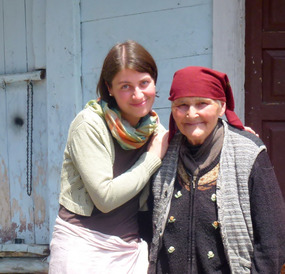
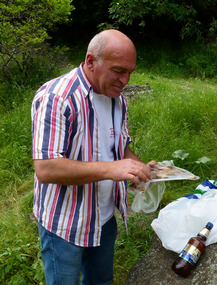
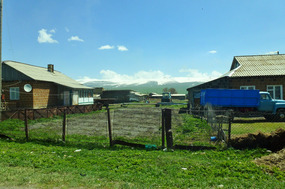
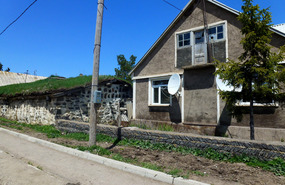
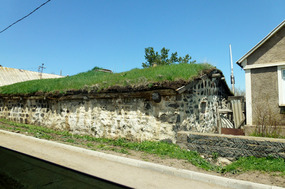

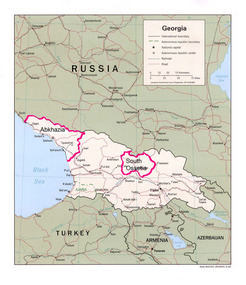
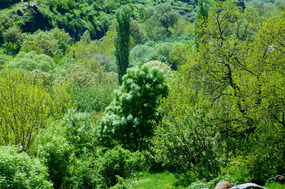
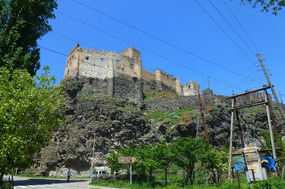
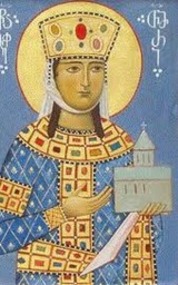

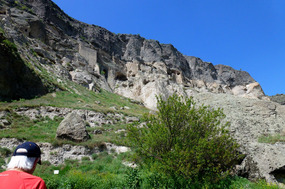
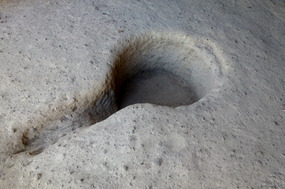
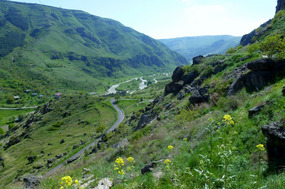
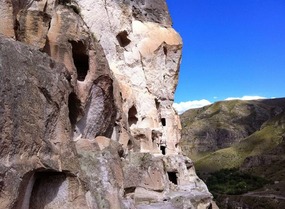
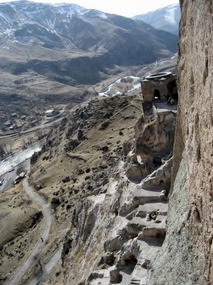
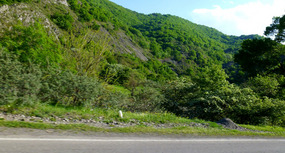
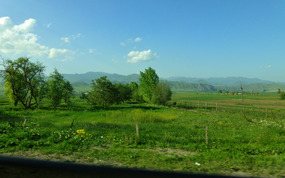
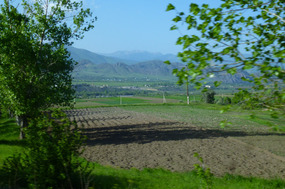






2025-05-22